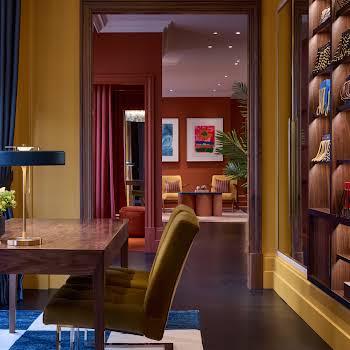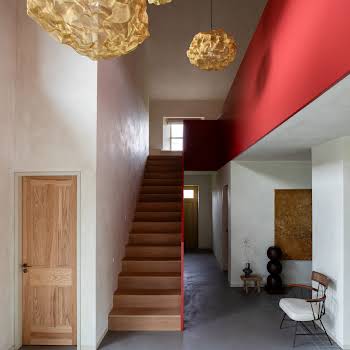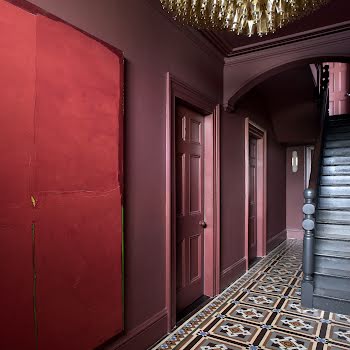
Designing for the Metaverse: meet the Irish company making cutting-edge virtual spaces
By Megan Burns
09th Aug 2023
09th Aug 2023
Liz Dolan, founder of Mortar & More shares how her studio has branched out to design virtual spaces for their clients, as well as physical ones.
Irish company, Mortar & More, is an award-winning international retail and hospitality design studio based in Dublin. Founded by Liz Dolan and Rob Tracey in 2014, they work with retail and hospitality brands to create interactive and engaging spaces, and have recently begun to create virtual spaces as well as physical ones.
This started during the pandemic, where it wasn’t possible to meet with clients to show them plans, so virtual reality became a great way to show them concepts and designs. However, seeing the great potential in this area, the company has continued to explore the possibilities of designing for the Metaverse alongside their traditional work.

Liz Dolan tells us more about this trend, and how she sees it developing.
You originally started working with virtual reality due to the constraints of Covid, but why are you excited about using this technology going forward?
VR is a great way to allow a client to see and experience a design in its early stages. For anyone who might not be able to visualise spaces and objects easily, VR is the perfect way to address this. It allows the participant to interact with your design and gain a clear understanding of the intent.
Having delivered a number of projects with the assistance of VR, our studio is beginning to deliver projects in the Metaverse. It is an area that is only growing and expanding and whilst no one can pinpoint exactly how it will evolve and be utilised, it can already offer benefits to participants and brands.
As a studio it allows us to work with brands to create spaces and dream up experiences which would not be possible to create in reality, you can turn design on its head and start to play around in a way that just isn’t possible in physical environments, and complements the work we do in the real world.

What are the benefits to clients to have their spaces designed both in the physical and digital worlds?
While the Metaverse can provide a space for a straightforward digital clone of a brand’s physical store, there is so much more that can be leveraged from it. It provides a space where brands can provide complementary services, educate their customers further on their brand, provide a space where users can earn loyalty points from a brand, it can provide an alternative space for brands and services to showcase, and the list goes on.
It’s a space to have fun and where they can complement their existing experience which they are providing to customers and clients.
Do you think the design world has fully embraced online spaces such as the Metaverse yet?
There are more and more opportunities for designers within the Metaverse. For well over a decade the space has been led by gamers who understand the power the Metaverse holds.
A number of international architect and designer Metaverse-ready studios are designing and selling space and furniture in the Metaverse. It is a big business.
The Metaverse provides space for playfulness with no structural constraints. It provides a freedom to designers where they can push the boat out and design cities, spaces, interiors and furniture which are unbound by the constraints of any physical environment.

How do you see these kinds of digital spaces becoming more important in the future?
I think designers and brands will continue to look at ways to use the Metaverse to expand on the overall brand experience and offering.
For designers there’s an opportunity to build on the development of physical space and how design will become a broader process where the aesthetics of a space are no longer the only drivers to the success of a design.
While digital cloning of commercial spaces is one approach to gaining a foothold into the Metaverse, platforms are becoming more powerful which leads to more refined designs with a user experience that will appeal to a broad audience.
Once interoperability between virtual worlds has been established and refined, it will reduce the barriers of entry for new users and the doors will really open up to all.






















